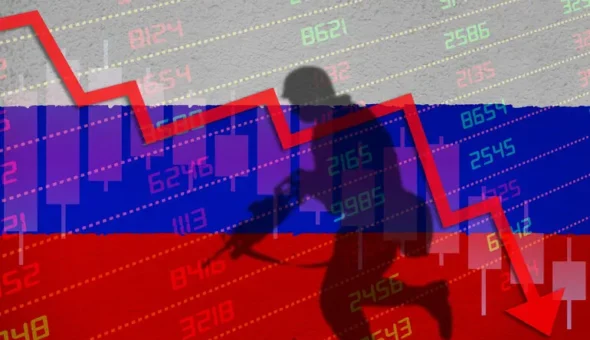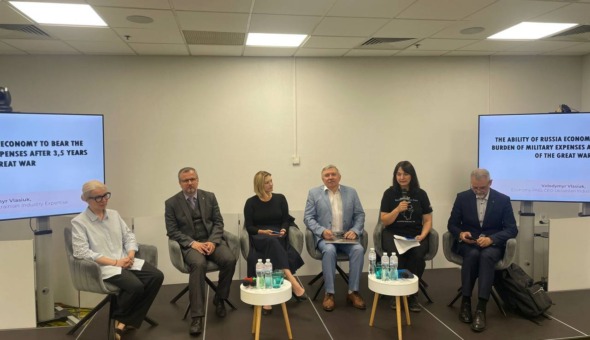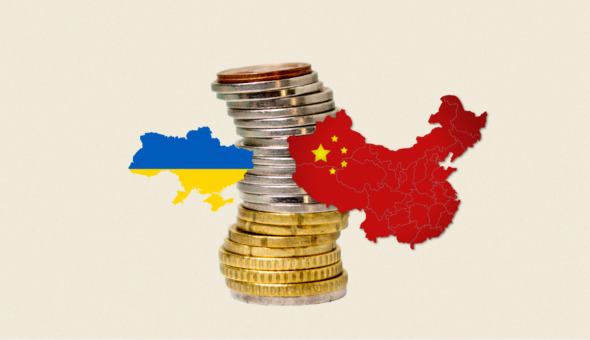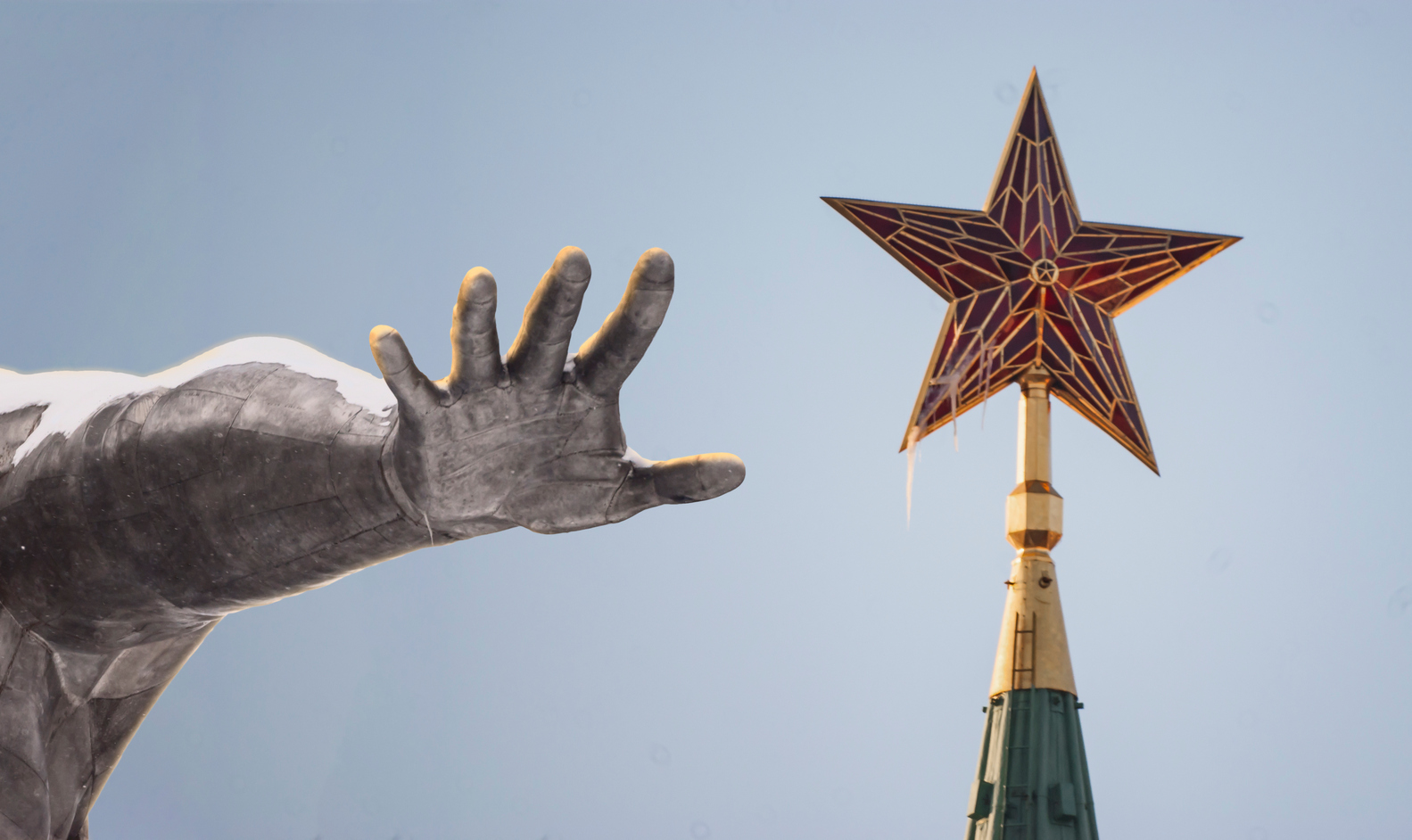
More than 300 billion dollars lie in the Western accounts of the russian central bank. These funds are a real opportunity to force the state sponsor of terrorism to pay for war crimes and destroyed Ukrainian cities, writes Economic Truth.
The second year of the great war continues, and Ukraine’s allies not only failed to confiscate this money, but they still do not reveal where exactly it is.
The freezing of reserves was supposed to be the most powerful sanctioning blow, but thanks to the long years of preparation for the war, the aggressor almost did not notice it.
Private assets cannot be taken either – kremlin oligarchs avoid responsibility by using professional lawyers and loopholes in Western laws.
Instead of sending russian money to the reconstruction of Ukraine right now, they lie in accounts and quietly wait for the end of the war to return to moscow.
russia was ready
Western sanctions after the annexation of Crimea in 2014 didn’t become a sentence for russians, but on the contrary – acted as an inoculation. They were not enough to start the financial crisis in russia, but they were enough to make the kremlin aware of the threat of new economic restrictions.
The russian central bank and the Ministry of Finance were hoarding money and transferring it to a safe place. In eight years, the international reserves of the russian federation increased from 385 billion dollars to 630 billion dollars.
Of course, this money wasn’t in the suitcases. The central bank invested them in currency assets abroad: Eurobonds, US Treasury bonds, gold, deposits.
Realizing that it could all be taken away, from 2017 to 2022, russia reduced the share of its assets in dollars and British pounds.
If at the beginning of 2014 there were USD 150 billion of highly liquid US Treasury bonds in russia’s reserves, eight years later they remained USD 5 billion. Instead, the share of assets in euros and yuan increased.
That is, the kremlin was preparing for sanctions from the USA and Great Britain, but not from China and the European Union.

The bet on EU passivity didn’t work. After February 24, 2022, the reserves of the central bank of the russian federation were frozen in all Western countries.
However, even when the world’s largest number of sanctions were imposed on russia in the first months of the Great War, the kremlin had enough money to keep the economy from collapsing. Only 15% of the available 630 billion dollars was spent to support the ruble in nine months.
However, even this spent money was returned to them, because Western countries continued to buy russian oil and gas. In addition, the Central Bank of the russian federation keeps a fifth of its reserves in gold, which can be converted into foreign currency if necessary.
According to the head of the KSE Institute, Natalia Shapoval, russia can sell gold for dollars or euros, using accounts in “neutral” countries.
The National Welfare Fund (FND) – putin’s war wallet – also helps the kremlin to survive. It is from his accounts that losses from sanctions are compensated: gaps in the federal budget are filled, strategic enterprises and the military industry are financed.
FND is essentially the reserve budget of the russian federation. The same “cubicle” that is used exclusively in times of crisis. The fund is filled with oil revenues. For example, if russian companies sell oil at $80 per bar, and the budget includes revenues of $44 per bar, then from each barrel of oil, $44 will go to the oil companies and the budget, and $36 will go to the National Fund.
In preparation for war, russia increased the amount of money in the fund from 65 billion dollars to 182 billion dollars (13.5 trillion rubles) from 2018 to 2022. And half a year before the invasion, all the assets of the FND were transferred to gold, euros, yen and yuan.
In order to combat the consequences of sanctions and finance the war, in the last three months of 2022, the russian government spent 3 trillion rubles from the FND.
According to the russian ministry of finance, the fund now has assets worth 11.9 trillion rubles, of which 6.7 trillion rubles or 87 billion dollars are liquid (those that can be quickly converted into money). KSE calculated that these funds will be enough for the kremlin to finance the war until the end of 2023.

If the russian federation finds additional sources of filling the budget and buyers for its energy resources, the FND will be sufficient for a longer period.
Ukraine has no such reserves and supports the economy with Western loans and grants. According to the World Bank, more than 400 billion dollars will have to be sought to compensate for infrastructure losses.
The only possibility to financially match the aggressor is to take away his frozen reserves in the West.
No one knows where the money is
In April 2023, the German publication Die Welt wrote that after the end of the war, the European Commission wants to return to the russians their frozen reserves, which in the G7 countries are more than 300 billion dollars.
It turns out that russia, which started the war, will receive these funds to restore its own economy, and Ukraine will remain at the broken trough with a pile of debts and destroyed cities.
The russians are unlikely to pay reparations on their own, so the only way to avoid such a scenario is to confiscate their money to compensate Ukraine.
However, in the second year of the great war, no one knows for sure where these 300 billion dollars are located, not to mention their confiscation. Politicians take information about the volume of this money from the reports of the central bank of the russian federation. That is, these data may not even correspond to reality.
“When Ukraine takes a loan from the IMF, they send us auditors who check our reserves. In russia, there have been no such checks for decades. No one has checked the reports submitted to the IMF with real assets, so we don’t know exactly how many reserves they have. We don’t even know the exact methodology of how they count their assets,” said Lidia Lisovska, analyst of the project “Russian assets as a source of recovery of the Ukrainian economy.”
In order to have a constructive dialogue with Western partners regarding russian money, Ukraine must know in which accounts and in which countries the russian billions lie. However, this information is not disclosed.
“Hundreds of billions of russian reserves are concentrated in the West. Such sums cannot lie anywhere. Presumably, such big money lies in government bonds. That is, the USA, Great Britain and Germany sold their debt securities to russia and their governments know exactly the amounts. At the same time, there are very few banks that act as intermediaries in such large deals, and establishing them for the state is not a problem,” said Shapoval.
However, in her opinion, if information about russian assets becomes public, Ukraine, together with its partners, will start diplomatic pressure and look for ways to get this money.
The countries in which the russians opened accounts for the placement of reserves are in no hurry to part with this money and hide information about it.
Difficulties of confiscation
Western countries are used to living by the rules. According to international rules, one country cannot simply take money from another. Such investment protection is called sovereign immunity.
It is thanks to the transparency and compliance with these rules that the British pound, the euro and the dollar are the leading currencies in which most countries of the world keep their reserves.
There is a risk that after the first confiscation of russian money, the lion’s share of investors will refuse to keep money in these currencies and will start looking for safer jurisdictions. Conditionally, China, which has 3 trillion dollars in reserves, will not want to invest money in countries that can take it away in the event of a conflict.
“Sovereign immunity can be limited legally, through the UN Security Council, referring to russia’s violation of all possible norms of international law. However, russia is a permanent member of the Security Council and can single-handedly block any such decision,” Deputy Minister of Justice Iryna Mudra explained to the EP.
In other words, international law does not work when it is necessary to bring to justice a large nuclear country that is a member of the UN Security Council.
Ukraine has set itself the goal of reforming international law and removing this contradiction. The idea is to create a mechanism that will allow the confiscation of assets of aggressor countries without the approval of the Security Council.
It will work like this. First, the UN General Assembly votes by a majority to bring the aggressor state to justice.
Such a resolution regarding the russian federation was adopted on November 14, 2022.
Which countries supported the resolution to collect reparations from russia
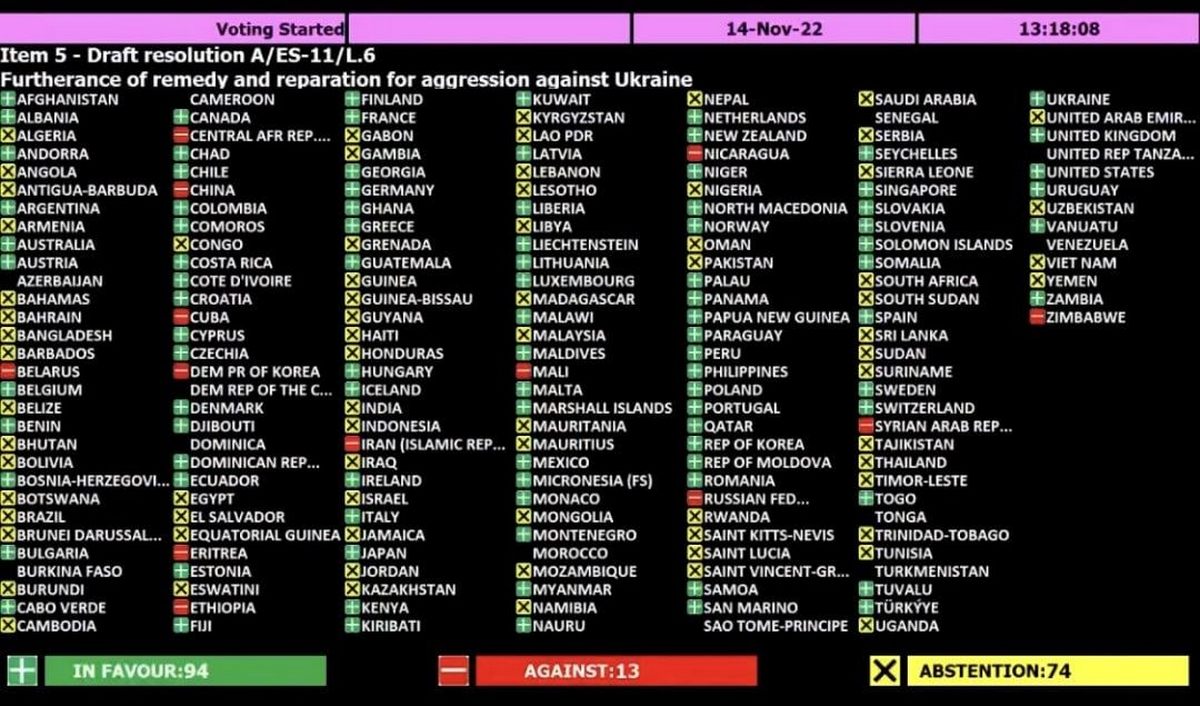
With reference to this resolution, an international treaty will be created. The countries that sign it will be obliged to find the aggressor’s money, confiscate it and send it to the affected state.
Funds will be allocated through the register of losses, where all material and human losses of each person, company and the state in general will be taken into account. The Ukrainian register of losses will be presented by the Ministry of Justice in the coming months.
In this way, Western countries will be able to legally limit the sovereign immunity of russia, referring to a specific international agreement and resolution of the UN General Assembly. In the future, any state affected by aggression will be able to use this mechanism.
The G7 countries will really be ready to hold russia accountable as soon as they sign the treaty.
How the reparations recovery mechanism will work?

While the negotiations on the registration of this mechanism are ongoing, the European Union is trying to find a compromise solution. For example, there is an idea to invest russian money in Eurobonds at 2.6% per annum, and give the profit from them to Ukraine.
Even if we assume that all 300 billion dollars will be invested in Eurobonds, Ukraine will be able to receive only 8 billion dollars per year, or less than 2% of the necessary amount for reconstruction. European countries, which will attract this money to their budgets, will benefit more from this step.
“These are political statements that have no legal basis. Using russian money, profiting from it and directing it to Ukraine will have the same risks and complications as a normal confiscation. So why not just do a legal confiscation?” Mudra asks.
In order to convince Western partners to confiscate this money, they must also be financially interested in it, Lisovska believes. European citizens already have their own interest in this.
“It is often difficult to explain to European and American taxpayers why they have to pay from their own pockets to support Ukraine.
The governments of Western countries can avoid these difficulties if they force the aggressor to pay by taking his money,” said Vladyslav Vlasyuk, adviser to the President’s Office, to the EP.
The oligarchs’ money is collected piecemeal
Another possibility to receive compensation is the money of russian oligarchs.
In the West, assets of russian businessmen worth $30 billion were frozen, but when it came to confiscation, the process began to slow down. As it turned out, these funds have to be collected piecemeal and litigated in each individual case.
The problem is that they plan to confiscate the russians’ money not for the war against Ukraine, but for their personal financial crimes. Prosecutors cannot always prove in court that this or that businessman violated sanctions or laundered funds. So the oligarchs can protect their fortunes in Western courts, taking advantage of their legal meticulousness and ability to drag out the process.
For example, racer Nikita Mazepin, the son of russian oligarch Dmytro Mazepin, managed to get part of the sanctions lifted through the court and continue to participate in competitions. He and his father have a villa in Italy for 105 million dollars recorded, which is subject to arrest.
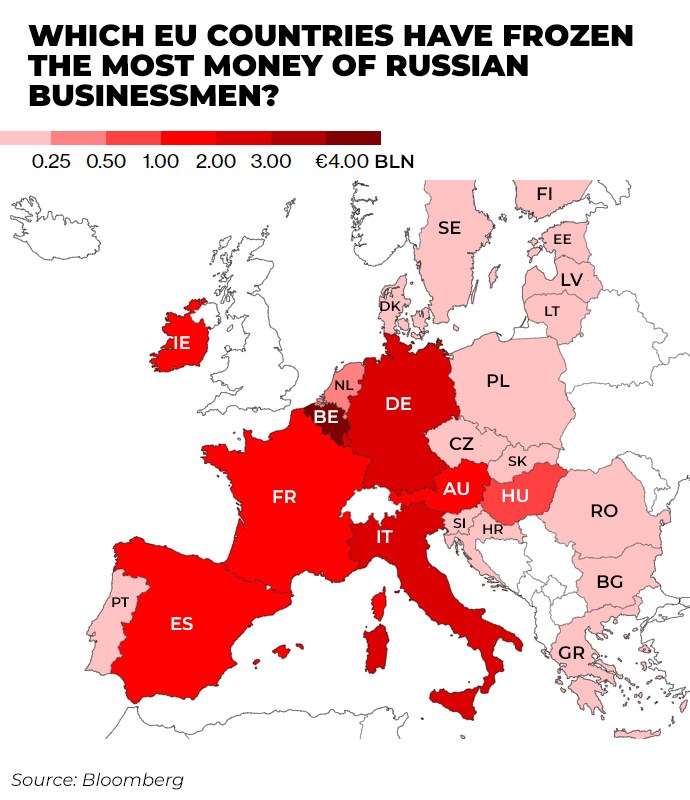
Transparency International notes that the EU should use alternative methods of confiscation that do not require lengthy courts. In this case, it will be necessary to provide much less evidence. Such alternative confiscation is already used in Ukraine.
In addition to the standard criminal prosecution, there are two other working mechanisms for the confiscation of russian money.
The first is the confiscation of russian state assets by presidential decree approving the decision of the National Security Council. The second is the confiscation of private assets due to the statement of the Ministry of Justice and the abbreviated trial of the case in the High Anti-Corruption Court.
Transparency International believes that in the first case, the russians can appeal the decision in higher authorities. In the second case, the procedure is more legitimate and involves a court, so it will be more difficult to appeal such a decision.
Abbreviated procedures for civil forfeiture do not yet exist in the West. It is important for Ukraine to remain a leader in the confiscation of russian assets and set an example for its allies to speed up this process.
Every Ukrainian who knows a foreign language can help search for russian assets, says Yaroslav Sydorovych, co-founder of the NGO “Network for the Protection of National Interests of the russian Academy of Sciences”.
To do this, you need to search in the state registers of Western countries for any information about land plots, yachts, airplanes, cars and other property belonging to russians.
Found assets should be reported to NAZK. The agency will then proceed to confiscate them.
The beginning of tests of the economic front
The economic success of Western countries is based on the protection of property rights, which is considered an indisputable value. Now, to protect other values, human lives and global security, the ownership of criminals must be limited.
Until countries develop a quick and effective mechanism to confiscate the aggressor’s money, the russians will continue to use Western courts and sovereign immunity to let their crimes go unpunished.
International law, which cannot punish an aggressor if he is a member of the UN Security Council, must also undergo changes. Being one of the leaders in reforming international rules fell to the Ukrainians, who suffer the most from this contradiction.
During 2023, it will be known whether Western countries will have enough political will to make russia pay for its crimes, or whether this war will become a convenient precedent of impunity for other aggressive regimes.
Speaking about the confiscation of the assets of the russian federation and its residents, one can recall the well-known proverb: “Never say never.” Especially in view of the transformations that many politicians’ statements regarding the supply of weapons underwent during the year: from categorical denial to significant support and concrete actions.
The material was created within the framework of the ANTS project “russian assets as a source of recovery of the Ukrainian economy”, which is implemented in cooperation with the National Democratic Institute (NDI) with the financial support of the National Endowment for Democracy (NED).

